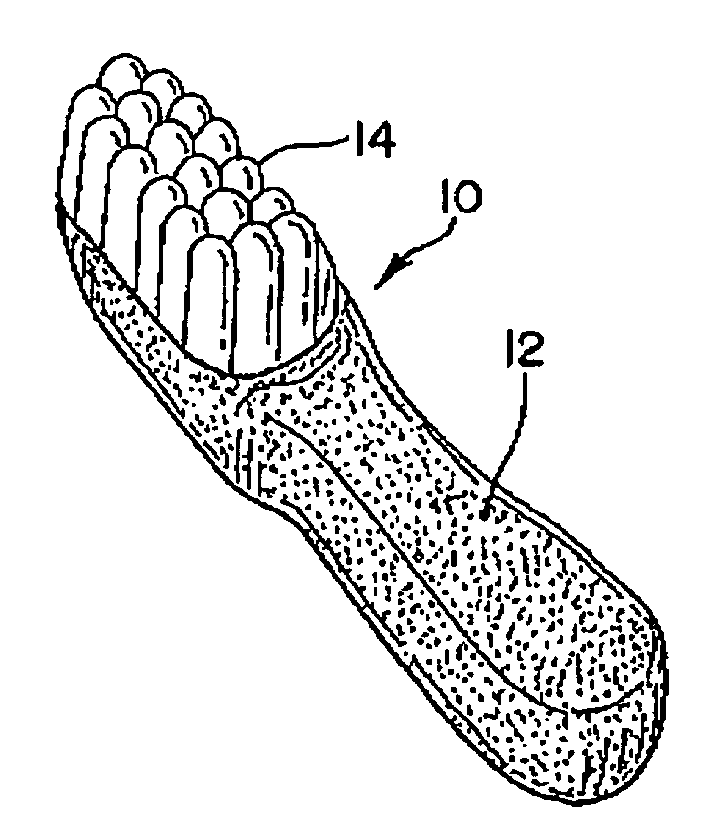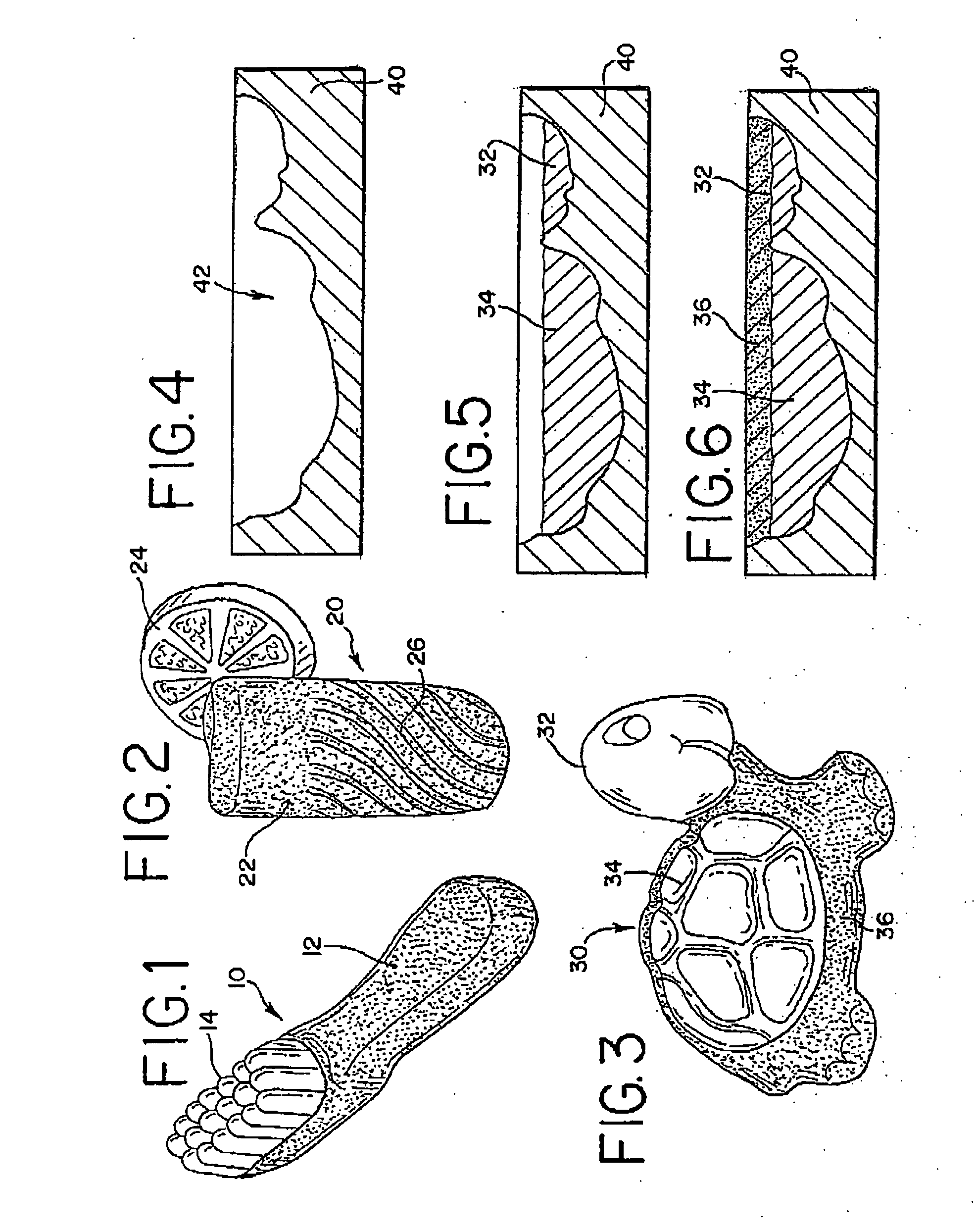Shaped chewing gum products and methods of making same
- Summary
- Abstract
- Description
- Claims
- Application Information
AI Technical Summary
Benefits of technology
Problems solved by technology
Method used
Image
Examples
example 2
[0045] In a second example, dextrose is used, and the sugar syrup is not heated before being combined with gum base. However, the mixture is heated to a temperature so that the dextrose melts. The product is very fluid for depositing. The dextrose then crystallizes as the product cools. The following ingredients are used in this example:
Ingredients%Gum Base22.00Dextrose36.00Corn Syrup16.00Sugar Powder22.96Lecithin0.20Glycerin2.00Flavor0.80Color0.04TOTAL100.00
[0046] The corn syrup may be a high maltose corn syrup, such as Roquette Flolys C 4580, containing 80% corn syrup solids and 20% water, The gum base may be SHAPE gum base from CAFOSA GUM S.A. The gum base, corn syrup, lecithin and color are added to a gum mixer heated to about 104-113° F. (40-45° C.) and mixed about 4 minutes. The sugar powder is added and mixing continues for about 2 minutes. The glycerin is added and mixed for about 1 minute. The dextrose is added and mixed for about 2 minutes. The flavor is added and mixed ...
example 3
[0048] A sugarless chewing gum formulation is prepared from the following ingredients:
Ingredients%Gum Base22.00Polyol Syrup55.00Maltitol Powder19.96Lecithin0.20Glycerin2.00Flavor0.80Color0.04TOTAL100.00
[0049] The polyol syrup is prepared by cooking Lycasin 80 / 55 HSH syrup from Roquette, which has a solids content of about 75%, with maltitol powder and additional water, the ratio of these ingredients is 42 parts maltitol powder, 46 parts HSH syrup and 12 parts water. The solution is cooked to a temperature sufficient to obtain a sugarless syrup with a solids content of about 91%. The syrup is used in the formulation above, following the process of Example 1, to make a sugarless product.
[0050] Using the present invention it is possible to make a product from only standard and basic ingredients of bubble gum, but which can be molded into intricate shapes, and maintain its shape during normal distribution, and still has acceptable texture and chew properties.
[0051] The typical produ...
example 4
Co-Deposited Chewing Gum and Taffy
[0053] A co-deposited product is made with the fluid gum of Example 1 and a taffy-type confectionery made as follows:
Ingredients%First CompositionSugar42.00Corn Syrup - 42 D.E.35.00Water10.00Sodium Citrate0.10Maltodextrin - 18 D.E.0.70Lecithin0.30Color0.05Gelatin MixtureGelatin - 150 Bloom1.00Water2.00Powdered Citric Acid1.00Fondant Sugar1.10Vegetable Fat6.50Flavor0.25TOTAL100.00
[0054] First, the gelatin is dissolved in water. Next the first seven ingredients are cooked to 225° F. (107° C.) to form the first composition (cooked candy). The gelatin / water is added to the cooked candy and this mixture is whipped or pulled to incorporate air. Finally the powdered citric acid, fondant sugar, vegetable oil and flavor are added after the whipping step. The total product is then loaded into a feeding hopper for co-depositing hot with the fluid gum composition. For a softer taffy part of the product, the cook temperature of the cooked candy can be reduced...
PUM
 Login to View More
Login to View More Abstract
Description
Claims
Application Information
 Login to View More
Login to View More - R&D
- Intellectual Property
- Life Sciences
- Materials
- Tech Scout
- Unparalleled Data Quality
- Higher Quality Content
- 60% Fewer Hallucinations
Browse by: Latest US Patents, China's latest patents, Technical Efficacy Thesaurus, Application Domain, Technology Topic, Popular Technical Reports.
© 2025 PatSnap. All rights reserved.Legal|Privacy policy|Modern Slavery Act Transparency Statement|Sitemap|About US| Contact US: help@patsnap.com


